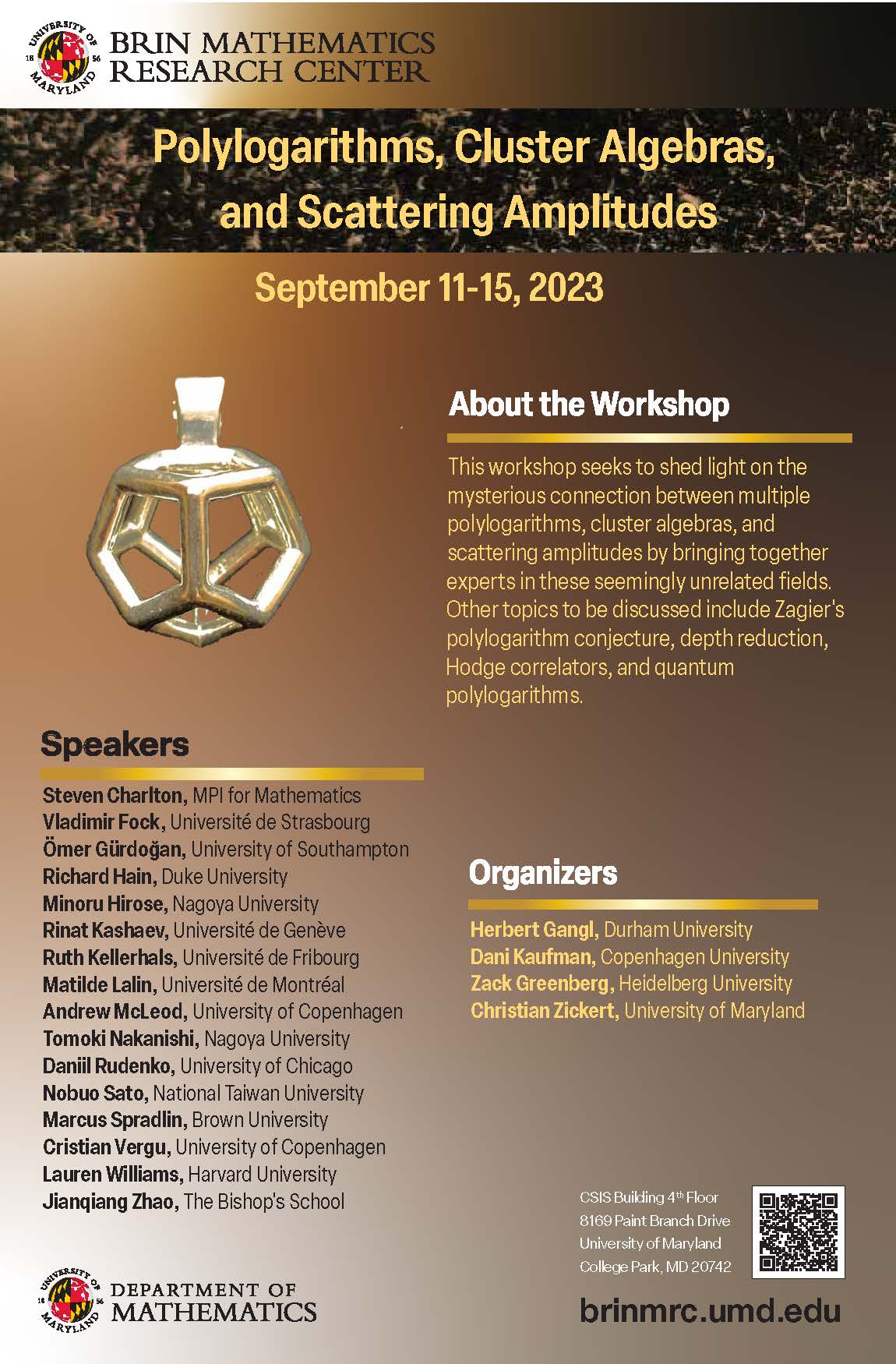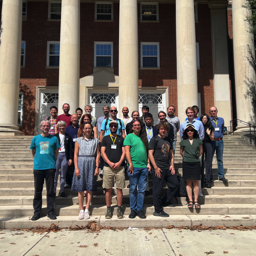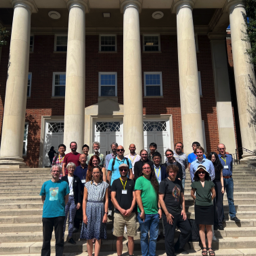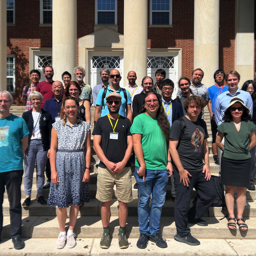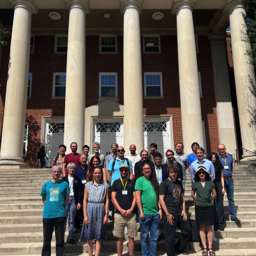Polylogarithms, Cluster Algebras, and Scattering Amplitudes
September 11, 2023 - September 15, 2023
Organizers:
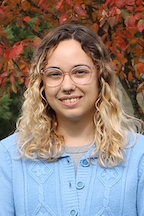
Dani Kaufman
Copenhagen University

Herbert Gangl
Durham University / MPIM Bonn

Zack Greenberg
Heidelberg University

Christian Zickert
University of Maryland
The classical polylogarithms were studied in the 18th and 19th century by many prominent mathematicians including Abel, Euler, Kummer and Lobachevsky. They were mainly interested in special values and functional relations. In the 20th century deep relations to algebraic K-theory, characteristic classes and motivic cohomology were discovered for the dilogarithm, and conjectural generalizations were formulated. In the 21st century it was discovered that formulas for scattering amplitudes often involve polylogarithms evaluated at cluster coordinates for a Grassmannian. This brings the theory of cluster algebras to the study of polylogarithms. There are many exciting recent developments including the proof of Zagier's conjecture (expressing the regulator in terms of classical polylogarithms) in weight 4 by Goncharov and Rudenko (2018) following a depth reduction formula by Gangl (2016), the general depth reduction (to half the weight) by Rudenko (2020, formerly a conjecture of Goncharov), the precise formulation of cluster polylogarithms and depth reduction in weight 6 by Matveiakin and Rudenko (2022), a cluster formulation of the second motivic Chern class by Goncharov and Kislinskyi (2021), and iterated integral expressions for Grassmannian and Aomoto polylogarithms by Charlton, Gangl and Radchenko (2019).
This workshop seeks to shed light on the mysterious connection between multiple polylogarithms, cluster algebras, and scattering amplitudes by bringing together experts in these seemingly unrelated fields. Other topics to be discussed include Zagier's Polylogarithm Conjecture, depth reduction, Hodge correlators, and quantum polylogarithms.
Speakers:
- Steven Charlton, MPI for Mathematics, Bonn, Germany
- Vladimir Fock, Université de Strasbourg, France
- Ömer Gürdoğan, University of Southampton, United Kingdom
- Richard Hain, Duke University
- Minoru Hirose, Nagoya University, Japan
- Rinat Kashaev, Université de Genève, Switzerland
- Ruth Kellerhals, Université de Fribourg, Switzerland
- Matilde Lalin, Université de Montréal, Canada
- Andrew McLeod, University of Copenhagen, Denmark
- Tomoki Nakanishi, Nagoya University, Japan
- Daniil Rudenko, University of Chicago
- Nobuo Sato, National Taiwan University, Taiwan
- Marcus Spradlin, Harvard/Brown University
- Cristian Vergu, University of Copenhagen, Denmark
- Lauren Williams, Harvard University
- Jianqiang Zhao, The Bishop's School, San Diego County
Poster:
